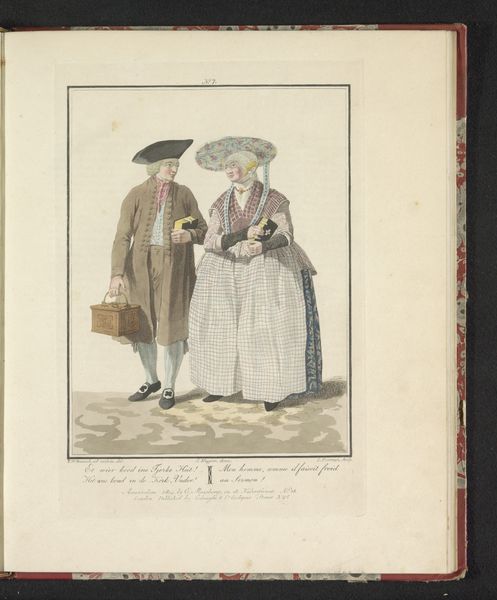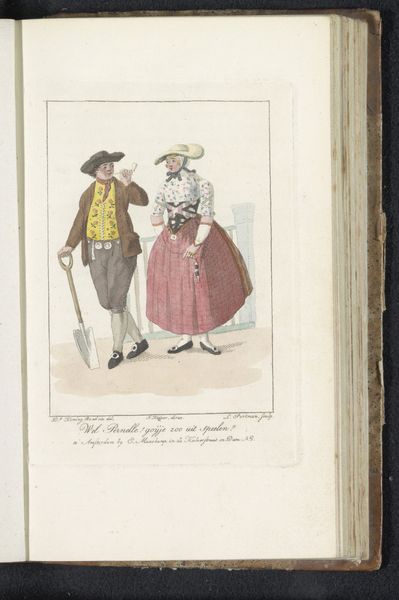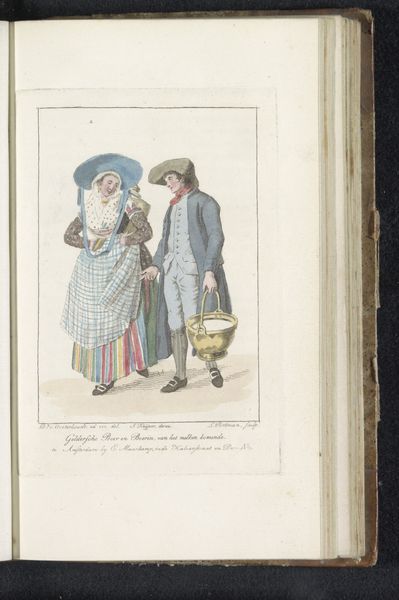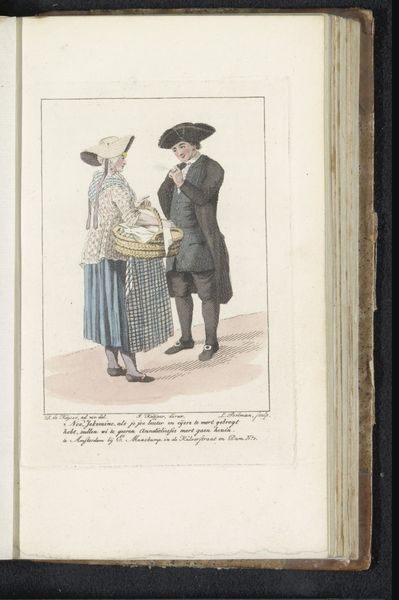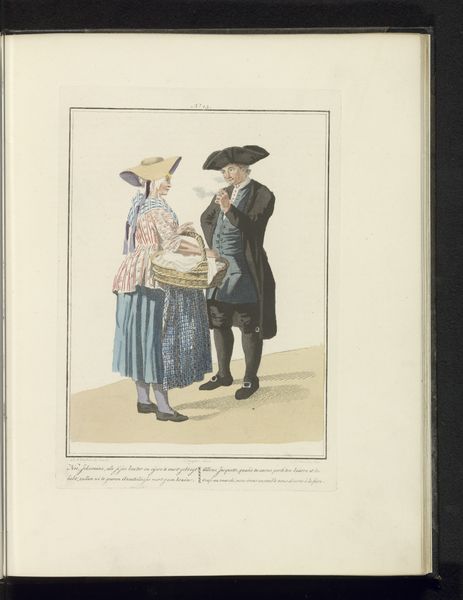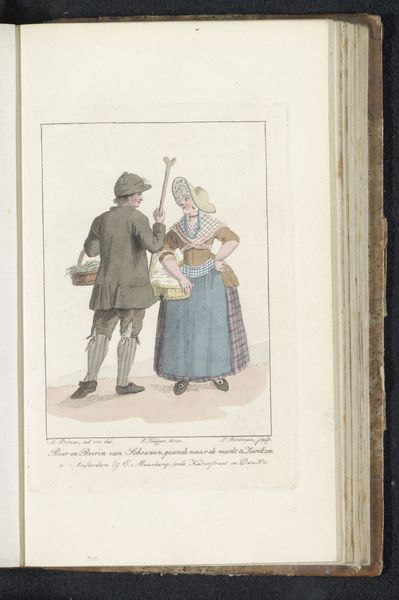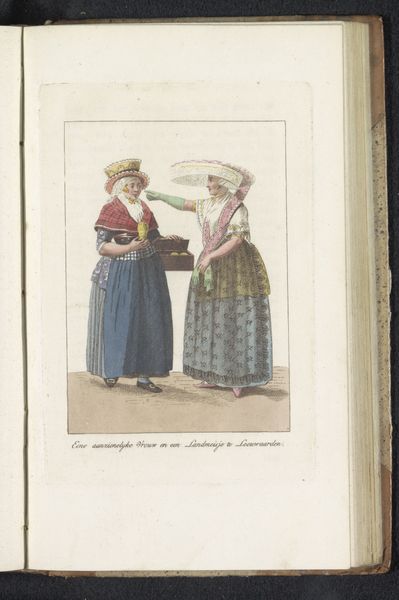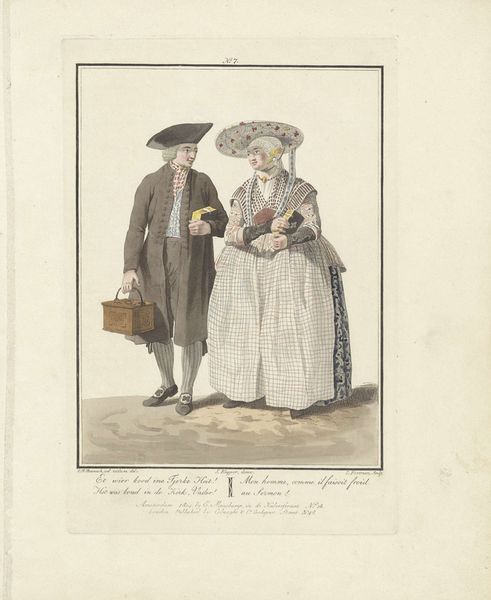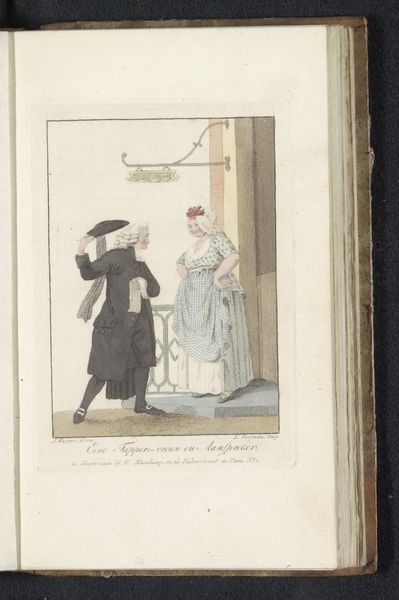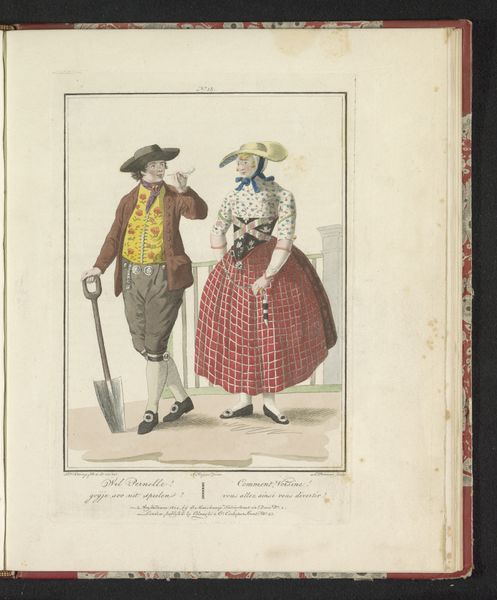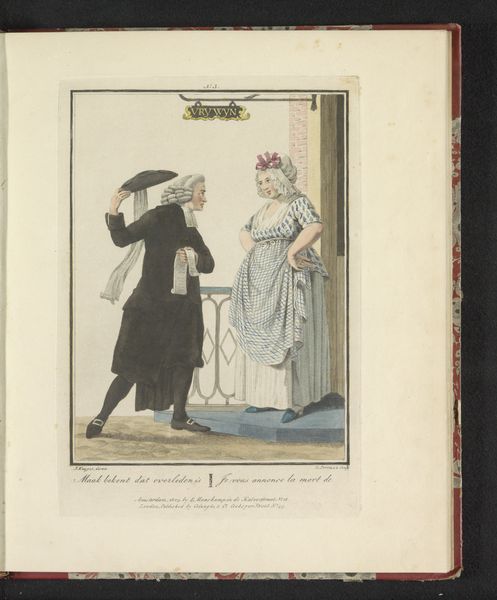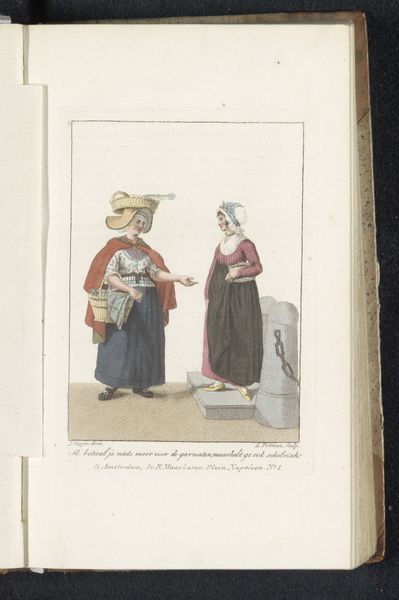
painting, watercolor
#
portrait
#
dutch-golden-age
#
painting
#
watercolor
#
romanticism
#
costume
#
genre-painting
#
watercolor
Dimensions: height 128 mm, width 92 mm
Copyright: Rijks Museum: Open Domain
Curator: Let's turn our attention to "Vissersechtpaar uit Friesland," or "Fishing Couple from Friesland," a watercolor created around 1812 by Ludwig Gottlieb Portman. It's currently held in the Rijksmuseum collection. Editor: My immediate thought is how meticulously ordinary they seem. There's a certain formal stiffness, but it's softened by the clear everyday intention in documenting their attire and maybe even their aspirations. Curator: It’s more than just attire; it’s about identity. The painting situates this couple within a specific socio-economic context, showcasing their regional markers of Friesland, a province with its distinct culture and history. Consider the legacy of Dutch painting and how "genre paintings" like this one function in visualizing societal status. This isn't just "everyday"—it's deliberately positioned. Editor: I see that positioning. Those precise details—the woman's elaborate lace cap, the man's specific hat shape, his buttoned coat—these become significant signifiers. They connect us not just to individuals but to an entire culture’s visual vocabulary of the time. You can practically "read" their social standing through the clothes. Even the small box the man carries—does it suggest his trade, his savings? It's heavy with implied meaning. Curator: Absolutely. Furthermore, the visual representation itself participates in the Romantic idealization of rural life that gained momentum during that period, following waves of industrialization. While presenting an accurate portrayal, it inevitably constructs an imagined version of Friesian life. Who commissioned it and what narrative were they seeking to create? That’s the more significant, more difficult inquiry. Editor: A narrative that still resonates, because in essence, visual culture continuously returns to defining—or indeed, inventing—cultural identity. We’re decoding symbols established over centuries when we look at dress codes now. Portman captures an instance when such signifiers were visibly solidifying. Curator: Precisely, understanding this informs our contemporary lens on issues of regional identity and representation, allowing for a richer understanding of visual cultural continuities. Editor: I leave feeling more deeply attuned to how clothes communicate status, even today. Curator: Indeed; may this portrait remind us that identity is always carefully cultivated, communicated, and received.
Comments
No comments
Be the first to comment and join the conversation on the ultimate creative platform.
